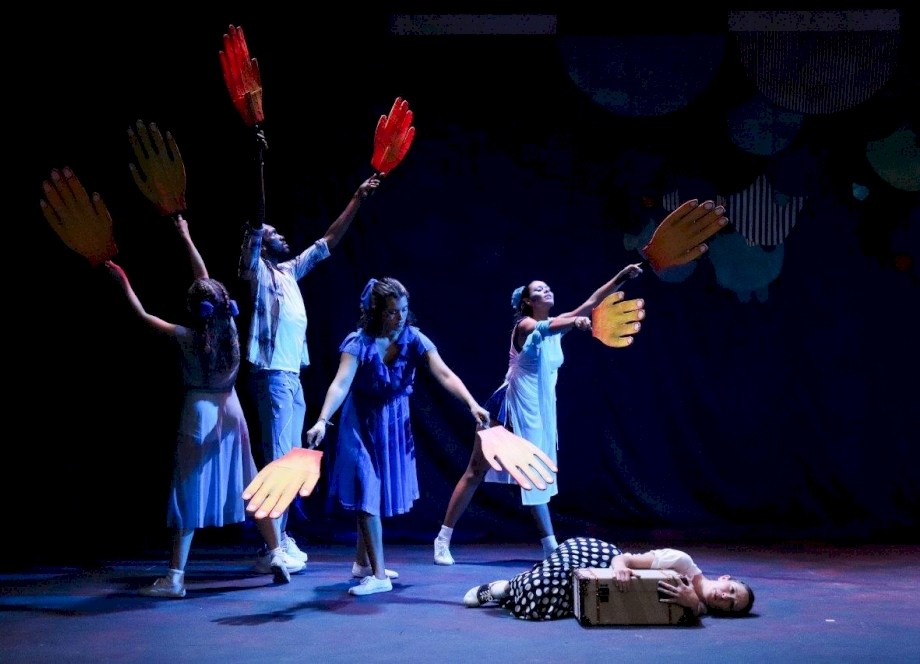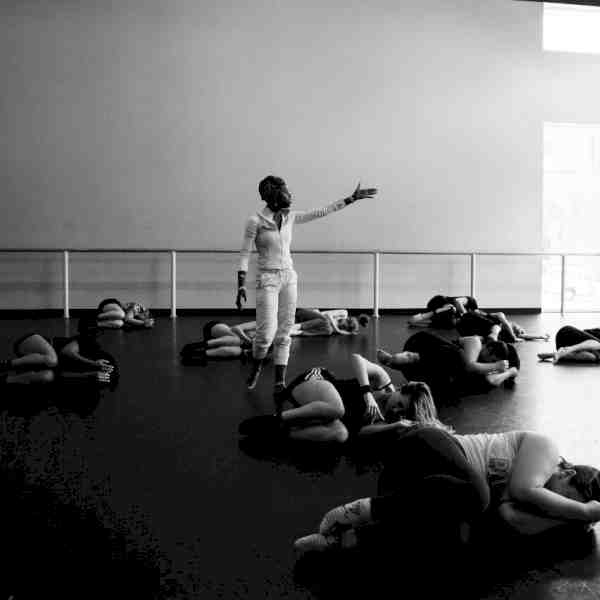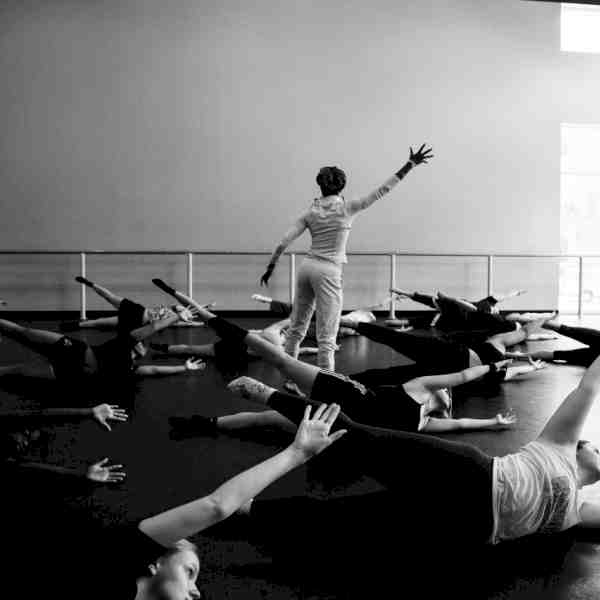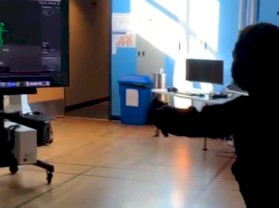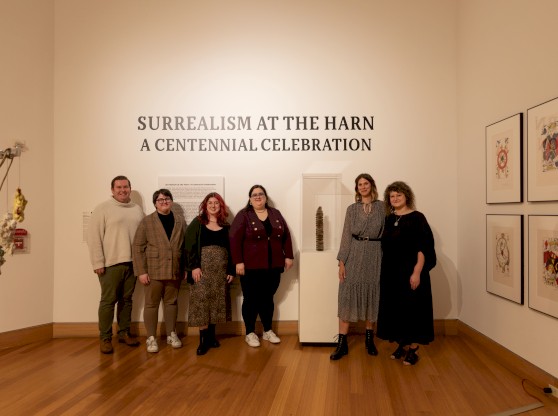As long as humankind has created art—from paleolithic cave paintings, to Gregorian chants, to Incan quipus, to Egyptian hieroglyphics, to voguing, to creative AI coding—art-making in its various forms has served to articulate cultural identities and rituals, and to define and preserve communities’ sense of place, memory, and meaning. Art-making is often utilized not only to record significant historical events, but to make meaning of them. In other words, art responds. It always has.
However, when we think of a first responder, it is the paramedic, the firefighter, and other occupations with specialized medical and emergency training that come to mind long before we consider the dancer or actor, the fiber artist, the muralist, the playwright, the children’s book illustrator, the set designer, or the streetside busker who can teach his neighbors how to craft found objects into drum kits.
But as the scope of harmful realities affecting communities across the globe escalates, including the COVID-19 pandemic and the heightened frequency and intensity of climate disasters, the practice of deploying artists in frontline response efforts is gaining traction.
This is the concept of the artist as second responder: a culture worker who brings arts engagement practices into disaster-impacted communities, after the immediate emergency has been triaged by first responders, as a means for recovery. Notably, some organizations such as the Oakland, California based Artist As First Responder (AAFR) posit that trauma-informed artists act as first responders by leveraging arts-based practices to facilitate creative community interventions and transformations—saving lives, both indirectly and directly, in their communities.
In short: the first responder saves lives. The second responder helps rebuild them—and the places that make them worth living—by helping communities create their own networks of resilience rooted in collective art-making.
Disaster and the Body: Arts and recovery in communities affected by natural and unnatural disasters
In the UF School of Theatre + Dance, professors Rachel Carrico and Colleen Rua lead a project titled Disaster and the Body, now in its fourth year, that explores how artists aid communities through recovery following disaster events. UF Center for Arts in Medicine (CAM) researcher and service-learning lecturer, Alana Jackson, and Antonio Sajid López in UF College of Liberal Arts & Sciences: Spanish & Portuguese Studies are collaborators in Disaster and the Body.
Shortly before the project developed, a two-year national initiative launched by ArtPlace America and UF CAM called “Creating Healthy Communities: Arts + Public Health in America” (2018-2020) convened thought leaders from across the U.S. to outline tenets and practices that define the emerging field of Arts and Public Health.
“Out of the conversations and convenings happening in 2019 through Creating Healthy Communities, five critical areas were outlined that the arts and public health were poised to address, including: collective trauma, social exclusion and isolation, and mental health,” says Jackson.
“Rachel and Colleen connected with me early in their brainstorming process for Disaster and the Body and we started having conversations around: how does this work connect into the field of arts and public health? What does the work actually look like? What are the artists who are working in disaster-impacted areas already doing?”
Learning from artists in hurricane-impacted communities: recovery in New Orleans and Puerto Rico
Combined, Carrico and Rua have decades of experience working with artists navigating the role of “second responder”—specifically in the aftermath of the major hurricanes Katrina (2005) and Maria (2017) that devastated the U.S. Gulf Coast and Caribbean communities of New Orleans and Puerto Rico.
Carrico (PhD, Critical Dance Studies) is an assistant professor in the School of Theatre + Dance, and affiliate faculty in COTA’s Center for Arts, Migration, and Entrepreneurship and Center for Arts in Medicine, and the Department of Gender, Sexuality, and Women’s Studies in the College of Liberal Arts & Sciences. Her research centers on second lining, the African diasporic parade tradition that is a central facet of New Orleans culture.
Second line parades are organized by Social Aid and Pleasure Clubs (SAPCs), some of which date as far back as the 1880s. SAPCs operate as year-round as mutual aid societies in their neighborhoods. They are typically non-professional artists, who “also just happen to get together and dance in the streets with a brass band once a year,” Carrico notes.
Learn about SAPCs and the second line tradition in Dancing in the Streets: Social Aid and Pleasure Clubs in New Orleans.
In addition to the “everyday folk” running these mutual aid dance collectives, Carrico’s research intersects with native New Orleans professional dancers and choreographers like Michelle N. Gibson and Jarrell Hamilton who also incorporate New Orleanian cultural elements into their works, leveraging large-scale platforms to reach international audiences.
In the immediate wake of Hurricane Katrina and throughout the yearly anniversaries that follow, Carrico says SAPCs are integral to first and second response efforts in New Orleans—as community organizers for rescue, aid, and rebuilding efforts, and as facilitators for grief, joy, cultural narration, and memory-keeping through the second line parade tradition. Gibson and Hamilton are examples of performers who leverage their platforms to amplify New Orleans cultural heritage and Black identity in the southern U.S., and to elevate and make palpable to global audiences the natural and unnatural disasters—social issues, such as the wave of gentrification that kept swaths of locals permanently displaced from New Orleans post-Katrina—impacting their home city.
Rua (PhD, Theatre) specializes in Theatre Studies with a focus on community-engaged practice in Latin America and the US, in particular how theatre is used as a tool for healing. She is an affiliate faculty in the UF COTA Center for Arts in Medicine and the Center for Arts, Migration, and Entrepreneurship, as well as the UF Center for Latin American Studies. Rua was recently appointed as Acting Associate Director of the School of Theatre + Dance.
Rua’s research centers Latinx/Puerto Rican contemporary theatre, as well as immersive theatre, youth theatre, and musical theatre. She collaborates with the Y No Había Luz theatre collective based out of San Juan, Puerto Rico, who she describes as “performers of care,” whose mission as second responders is a direct result of Hurricanes Maria and Fiona (2022).
“When Rachel and I arrived at UF in 2019, we had both been collaborating with artists who work in response and recovery to disasters. We thought there might be a way to bring together artists from the Gulf and Caribbean regions who are doing this kind of work to have conversations around art and recovery,” Rua says.
Although the emergence of the COVID-19 pandemic temporarily halted plans to bring artists physically together in Gainesville, Disaster and the Body has connected UF Theatre and Dance students, virtually, with artists like Michelle Gibson and Y No Había Luz, since 2020.
Carrico and Rua produced a video, edited by former UF multimedia specialist, Rich Hibner, that documents Gibson's and Y No Había Luz’s 2020-2021 virtual residencies at UF SOTD. The video features rehearsal processes, class visits, and artist talks, as well as clips from Gibson's and Y No Había Luz’s culminating performances. You can view the video on YouTube.
The Summer B 2023 term (July 3 through August 11, 2023) marked the first year it was possible for visiting artists to share space with each other and work with UF students via on-campus residencies.
Dancer Jarrell Hamilton and members of Y No Había Luz (Yari Helfeld, Joel Guzmán, and Pedro Iván Bonilla) were among the visiting artists who traveled to Gainesville for the 2023 Creative B Summer Program: Recovery Through the Arts presented by the College of the Arts with support from the UF Office of the Provost.
This summer, Rua and Carrico took a break from facilitating Creative B theatre and dance intensives and a Disaster and the Body artist talk to discuss the ways artists activate healing after communities are impacted by natural disasters.
Arts-engaged communities are better prepared to mobilize collective care
“One thing I think about often is the work [Social Aid and Pleasure Club] collectives were able to mobilize post-Katrina and the mobilizing they’ve done during COVID. Mobilization was possible because they were set up as neighborhood networks for generations,” Carrico says.
“This was not because they were doing work that was intentionally ‘preparing for a disaster.’ It was because the work they did in their communities all the time put them in a position, when the hurricane happened, that they were better connected and organized than many of the government or volunteer organizations that were coming in [from outside the community],” she adds.
“They had access to cash. They had access to communication networks. They were already seen as leaders in their communities. They were able to find out who was where and who needed what.”
Y No Había Luz was founded in San Juan, Puerto Rico 2005—but it was not until the catastrophic Hurricane Maria struck the island in 2017 that the collective coalesced around their mission as second responders.
“Some folks in the collective are originally from the communities they work closely with, now, so there were relationships and trust. Because some of the communities they work with are in the mountains and don't always have reliable access to infrastructure and technology, it can be insulating—so trust-building can take time. Having those connections prior to Hurricane Maria was important,” Rua says.
“Initially, when [Y No Había Luz] were called upon by the mayor of San Juan to go into shelters and work with folks, they thought, ‘we're not water, we're not food, we're not power generators. Should we even do this?’ But they loaded up their van with puppets, crayons, markers, and their instruments—because those are the resources they have, right?—and they went into the community and did this work. And it was really impactful.
With Hurricane Fiona [in 2022], they were more prepared, and they had more financial support. They organized ‘cultural brigades,’ as they called them, to several different communities across the island. They were able to do that because they were more organized in terms of travel and resources and scheduling, and the connections they had in those communities.”
A reason to return and rebuild: Artists offer hope and joy during times of grief and loss
Carrico says a key takeaway from observing the role Social Aid and Pleasure Clubs and second line parades played in New Orleans’ post-Katrina recovery is that a community that is anchored by its tight-knit cultural fabric provides a sense of “home” for displaced people to return when they are able.
Benevolent mutual aid societies “were able to give people a reason to come home, something to live for and look forward to, and [a reason to] want to rebuild—specifically post Katrina—and to sort of claim the space, like, ‘yes, we get to return to this place,’” Carrico says.
In 2006, the All-Star Second Line parade drew more than 8,000 participants—many of whom were displaced by the hurricane—into the streets of New Orleans in a post-Katrina homecoming celebration that heralded the beginning of rebuilding.
Much like second lining, Y No Había Luz facilitates buoyant community gatherings that are intended to draw a participatory crowd—the more the merrier. The theatre collective incorporates elements of physical theatre, mask-making, puppetry and clowning, and cantastoria (a theatrical form where a storyteller references images as they sing or tell a story) in the arts practices they bring into communities.
An integral facet of the work, Carrico and Rua agree, is meeting communities where they are and ensuring that the tools for community-wide arts engagement are accessible.
“[Y No Había Luz] aesthetic embraces ‘storytellers theatre.’ They’re crafting items made of papier-mâché, fish made of cardboard; an ocean can be made of fabric… It’s these kinds of simple storytelling elements that are something that communities would have access to … they don't need anything fancy or special to make the work happen,” Rua says.
Reshaping memory: Storytelling empowers communities to own their narrative
Artists play a crucial role in centering and uplifting the experiences and voices of people affected by disasters, and in helping them shape the narrative that placemarks the event in history.
“One very significant role of the artist in the post-event is the role of the storyteller—of collecting experiences and stories from on the ground and sharing them with the world; to be a kind of memory keeper and record keeper of what has happened,” Carrico says.
“Performing artists from New Orleans like Michelle Gibson and Jarrell Hamilton, African American women who are, themselves, members of these communities, have platforms to tell stories about what happened; about what's still happening in the long afterlife of a disaster; to collect memories, and to correct the record in some cases—especially in the case of Katrina—about the ways that Black people were portrayed in the media coverage of the event,” she adds.
Rua shares an illustrated book titled Centinela de Mangó (The Mango Tree Sentinel), created by Y No Había Luz after Hurricane Maria, as a youth-focused example of memory-shaping and healing that can also appeal to adults.
“This is a children's book about a tree in this community that was ripped out of the ground by the hurricane. The story is about zefirantes (magical elves) that come to spread the seeds of the tree for regrowth. They reframe the hurricane as a kind of cleansing—something comes to clean away the toxic environment that had been created by humans,” Rua says.
“Art provides space for reshaping the memory of an event. In particular, the artists in Puerto Rico are doing that in a joyful way. They’re offering, at a time of great distress, moments of joy and moments of hope.”
“Yes, right! And often, participants who are engaging in [art-making activities] are actively reshaping the event for themselves,” Carrico adds.
“I saw this happen with the work Michelle Gibson did with our students while she was in the thick of [the COVID-19 pandemic] in Fall 2020 and Spring 2021. She was with them [virtually] to create a work in the chapel at UF called Attend to My Prayer. It was very much about … a plea to set things right that had been unsettled for them. Most artists are not trained therapists—but there is something therapeutic and healing about the work they do with people. It might not result in a stage production, but … the process is the thing that can matter the most,” she says.
Carrico and Rua note that in second response work, mental health support is not only critical for impacted communities, but for the artists who serve them. Disaster and the Body research partner Alana Jackson in the Center for Arts in Medicine leads a research effort called 'Bodies at Rest' that she says is designed to address how to “care for artists who care for others.” Jackson partners with colleagues from the College of the Arts, as well as UF Health Shands Arts in Medicine in this research.
“In the arts in health field, we often think about scope of practice in the sense that: we want artists to be able to be artists and to not have to bear the full burden of the weight [in spaces impacted by natural and unnatural disasters],” Jackson says.
“Of course, realistically, artists are going to carry that weight because we’re empathetic and simply because we're human ... But when you know what your professional practice is; when you know the boundaries of your work and you understand things like compassion fatigue and burnout prevention—you realize partnership is a beautiful thing. Partnering with mental health providers makes a lot of sense in those spaces,” she adds.
In it for the long haul: Establishing sustainable skills for community-led arts practices
Whereas New Orleans benevolent societies and social clubs have been and continue to be seated in their local communities for generations, other second response artists like Y No Había Luz cannot always maintain a daily presence in the communities they visit.
“What they're really focusing on, now, is how to provide a foundation for communities to self-sustain and continue the work after they leave. They are not the kind of group that comes in and does a one-off and then is gone. They have ongoing relationships, and they feel a real responsibility to care-taking for the community over time,” Rua says.
In part, this means ensuring that the arts practices second responders bring into communities can be replicated in their absence. Y No Había Luz demonstrates outside-the-box creative techniques that transform blue bed sheets into rippling ocean waves, papier-mâché mask-making, and other theatre set-design elements and parade embellishments that can be made using objects at hand.
The arts practices and tools used to anchor disaster recovery efforts will vary across communities, cultures, and circumstances—but the most important aspect of any second response, Carrico and Rua agree, is empowering communities to take the lead in organizing their own long-term healing and resiliency. And that begins at the point of entry.
“I want to emphasize that supporting what's already happening in a community and really understanding who these communities are is very important,” Rua says.
“Rather than trying to enter with ideas or solutions that we either don't have or aren't equipped to have because we're not already part of those communities, it’s about thinking of ourselves as folks who are supporting the work.”
The Disaster and the Body team, in partnership with the Arts Alliance in Sarasota County, will travel to Fort Myers this month for the one-year anniversary of Hurricane Ian (2022), which peaked as a top-tier Category 5 hurricane shortly before striking the southwest Florida community as a powerful Category 4.
“Since Hurricane Ian last fall, Rachel and I have been thinking about not only bringing Florida into the conversation, but also thinking about: what is our responsibility as scholars doing this work and in connecting artists to this work?” Rua says.
“Connecting” is the key word.
“Step one,” Carrico says, “is to figure out: who's already there? What are the organizations? Who are the people? What is the culture? It can come down to asking around by word of mouth, ‘who knows who?’ and even Googling [to find out] who’s doing what.”
“What we want to do,” she adds, “is come in—if possible, with our UF resources and our ongoing line of investigation and know-how—to support what was already happening.”
